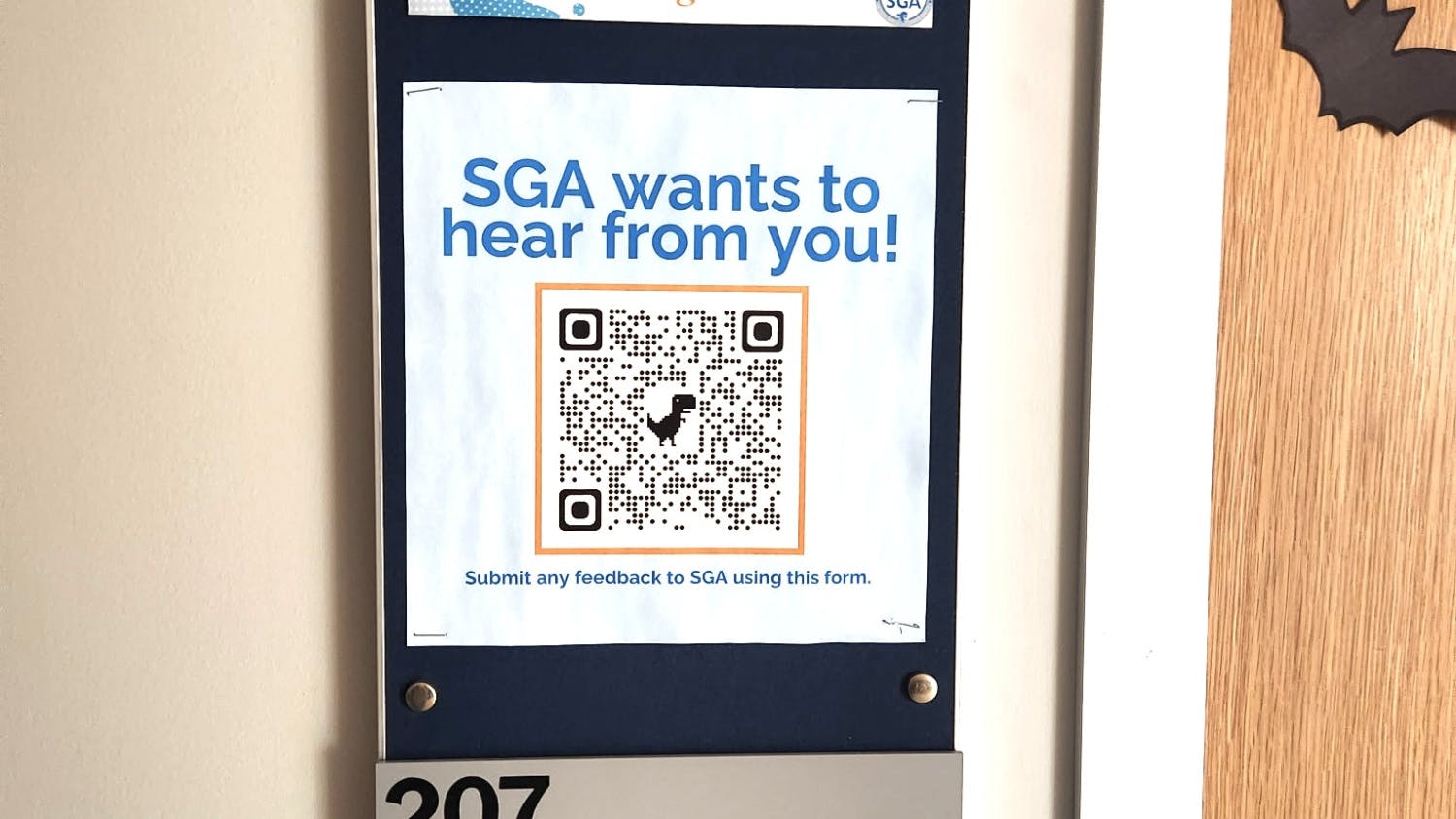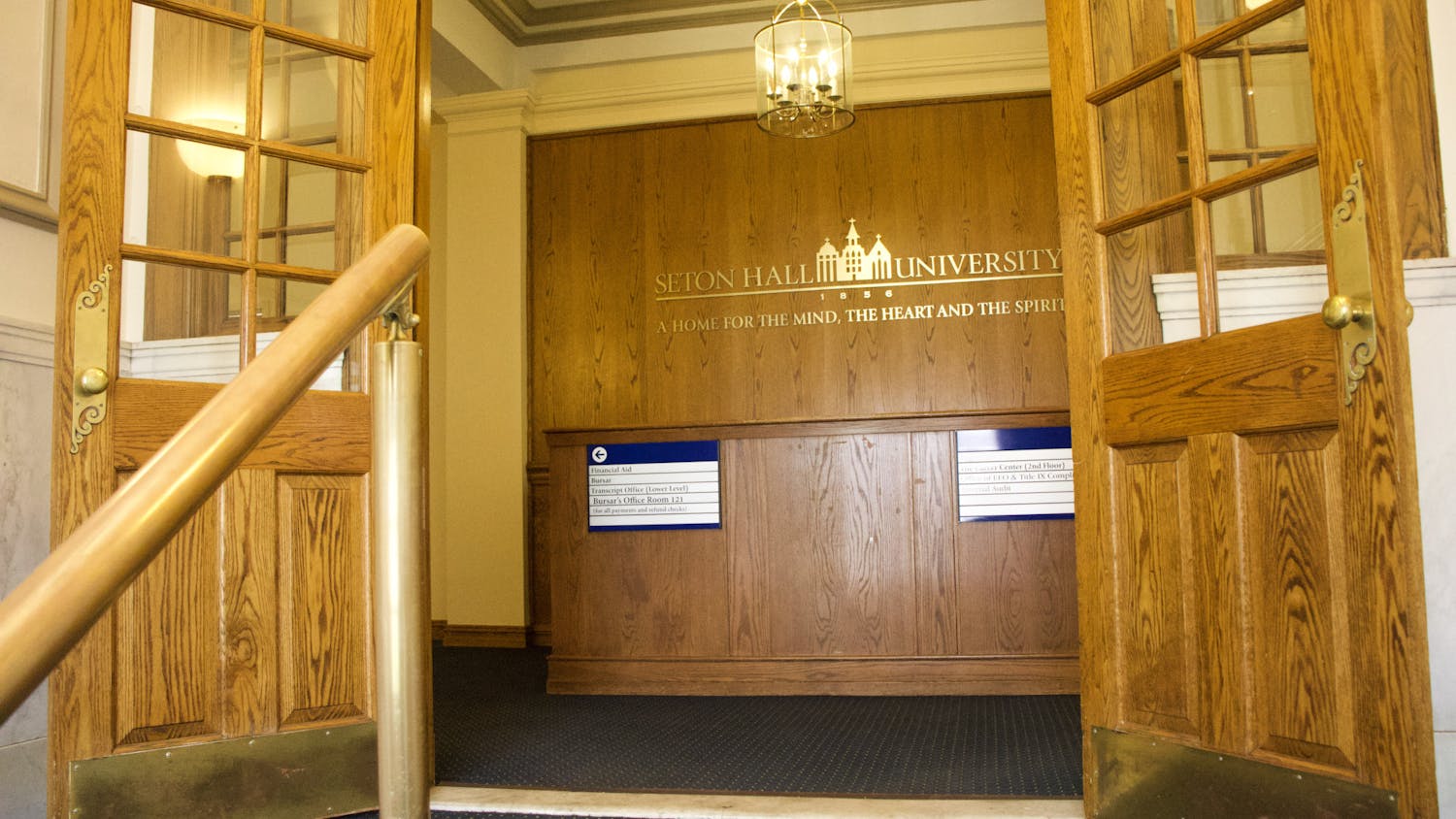 All Seton Hall students see the same thing when they view their Bursar Account statements: tuition, insurance, mobile computing fee and the “University Fee” on the left; and a list of grants, loans, scholarships and payments on the right.
Since tuition costs the Seton Hall student nearly $18,000 per semester, according to SHU’s online tuition and fees breakdown, students want to know the breakdown of where all of their money is going.
Students who began their academic careers at Seton Hall in 2012 have seen a jump in tuition rates from $33,490 for the 201213 school year to $36,926 in the 2015-16 school year, according to statistics provided by the University’s Chief Financial Officer Stephen Graham.
This increase in the cost of higher education is not only visible at Seton Hall. Other private schools in New Jersey and nationwide have been forced to make similar tuition cost adjustments.
Drexel University students currently pay $47,016 in tuition and fees, whereas four years ago the
students paid $41,940 in tuition and fees – more than $5,000 less than the current cost of education.
However, Stevens Institute of Technology has kept its increase percentage per year consistently lower than that of Seton Hall, according to the statistics provided by Graham.
According to Seton Hall’s Undergraduate Tuition and Fees Comparison, SHU has regulated its tuition effectively.
The 2015-16 school year will be the first year on record that Rider University’s tuition will surpass that of Seton Hall. Rider’s website shows a full year of tuition costs $37,650, while Seton Hall’s website states that a year of tuition at SHU is $35,940.
Seton Hall University is a notfor-profit school. Graham said that, “any surplus that remains on the budget is reinvested back into the University.”
Seton Hall, like other private universities, does not receive as much funding from the government as their state-school counterparts.
Because of this, SHU is heavily dependent on tuition – 71 percent of the school’s revenue comes from it. SHU brings in another 12 percent of its income through room and board fees.
“Our mission is to provide the highest level of education and services for our students from all walks of life,” Graham said.
Leslie-Anne Dessources, a junior in the speech-language pathology program, said she is not getting her money’s worth out of SHU housing.
“For all the money that we pay, we can definitely have furniture that’s actually put together and doesn’t fall apart,” Dessources said regarding her dorm room desk in Xavier Hall that is missing one of its drawers. “My sister went to Saint John’s University. She pays the same for housing as me, and she has immaculate housing.”
The Office of the Bursar is the entryway for students’ tuition money into Seton Hall.
Associate Bursar Jacqueline Warren refers to the Office of the Provost when asked where the money laid out on a student’s bill actually goes.
“The Bursar’s office is accounts receivable so we take in money, and after we take in money, it gets routed to different places,” Warren said.
The breakdown of the school’s core expenses, Graham says, is as follows.
Instruction, or the salary of instructors and professors, makes up 30 percent; while maintenance and operations of buildings on campus makes up 10 percent. Academic support (administration of the individual schools and colleges, the Provost Office, etc.) is at 14 percent of Seton Hall’s expenses.
Student services, or the services “targeted for quality of life on-campus for students,” Graham says, makes up another 14 percent.
Institutional support, including technological support and the Office of the Bursar, accounts for 17 percent; depreciation, which goes toward the school’s operating budget, makes up 6 percent.
The interest expense on the school’s debt is at 2 percent.
Research projects, as Graham said in an email, performed by faculty members that are externally funded by private or public grants make up 3 percent of Seton Hall’s yearly expenses.
The remaining 4 percent is made up of University fees, Graham said.
Graham says SHU strives to stay below the national average in terms of yearly tuition increases.
While tuition increases can be an inconvenience to students, Graham says that students can see their tuition dollars at work through updates to the University’s infrastructure and academics.
“Every year we have capital projects that are long-term maintenance projects,” Graham said. “One building that we have to invest significantly in is Mooney Hall eventually.”
Graham says that Mooney Hall, which has been identified as a possible future building for the College of Communication and the Arts, will not see any changes for several years.
Since Seton Hall is not-forprofit, the University is required to make their 990 forms, filed to IRS, open to the public.
Despite the publication of the annual 990 Forms, some students said that the University is not transparent enough when it comes to explaining how tuition is set and where that money goes.
“I didn’t know it was raised until I looked at my bill and compared it to the last year,” said Shannon O’Grady, a junior elementary and special Education major. “I think they should tell us more.”
Brianna Bernath can be reached at brianna.bernath@student.shu.edu.
All Seton Hall students see the same thing when they view their Bursar Account statements: tuition, insurance, mobile computing fee and the “University Fee” on the left; and a list of grants, loans, scholarships and payments on the right.
Since tuition costs the Seton Hall student nearly $18,000 per semester, according to SHU’s online tuition and fees breakdown, students want to know the breakdown of where all of their money is going.
Students who began their academic careers at Seton Hall in 2012 have seen a jump in tuition rates from $33,490 for the 201213 school year to $36,926 in the 2015-16 school year, according to statistics provided by the University’s Chief Financial Officer Stephen Graham.
This increase in the cost of higher education is not only visible at Seton Hall. Other private schools in New Jersey and nationwide have been forced to make similar tuition cost adjustments.
Drexel University students currently pay $47,016 in tuition and fees, whereas four years ago the
students paid $41,940 in tuition and fees – more than $5,000 less than the current cost of education.
However, Stevens Institute of Technology has kept its increase percentage per year consistently lower than that of Seton Hall, according to the statistics provided by Graham.
According to Seton Hall’s Undergraduate Tuition and Fees Comparison, SHU has regulated its tuition effectively.
The 2015-16 school year will be the first year on record that Rider University’s tuition will surpass that of Seton Hall. Rider’s website shows a full year of tuition costs $37,650, while Seton Hall’s website states that a year of tuition at SHU is $35,940.
Seton Hall University is a notfor-profit school. Graham said that, “any surplus that remains on the budget is reinvested back into the University.”
Seton Hall, like other private universities, does not receive as much funding from the government as their state-school counterparts.
Because of this, SHU is heavily dependent on tuition – 71 percent of the school’s revenue comes from it. SHU brings in another 12 percent of its income through room and board fees.
“Our mission is to provide the highest level of education and services for our students from all walks of life,” Graham said.
Leslie-Anne Dessources, a junior in the speech-language pathology program, said she is not getting her money’s worth out of SHU housing.
“For all the money that we pay, we can definitely have furniture that’s actually put together and doesn’t fall apart,” Dessources said regarding her dorm room desk in Xavier Hall that is missing one of its drawers. “My sister went to Saint John’s University. She pays the same for housing as me, and she has immaculate housing.”
The Office of the Bursar is the entryway for students’ tuition money into Seton Hall.
Associate Bursar Jacqueline Warren refers to the Office of the Provost when asked where the money laid out on a student’s bill actually goes.
“The Bursar’s office is accounts receivable so we take in money, and after we take in money, it gets routed to different places,” Warren said.
The breakdown of the school’s core expenses, Graham says, is as follows.
Instruction, or the salary of instructors and professors, makes up 30 percent; while maintenance and operations of buildings on campus makes up 10 percent. Academic support (administration of the individual schools and colleges, the Provost Office, etc.) is at 14 percent of Seton Hall’s expenses.
Student services, or the services “targeted for quality of life on-campus for students,” Graham says, makes up another 14 percent.
Institutional support, including technological support and the Office of the Bursar, accounts for 17 percent; depreciation, which goes toward the school’s operating budget, makes up 6 percent.
The interest expense on the school’s debt is at 2 percent.
Research projects, as Graham said in an email, performed by faculty members that are externally funded by private or public grants make up 3 percent of Seton Hall’s yearly expenses.
The remaining 4 percent is made up of University fees, Graham said.
Graham says SHU strives to stay below the national average in terms of yearly tuition increases.
While tuition increases can be an inconvenience to students, Graham says that students can see their tuition dollars at work through updates to the University’s infrastructure and academics.
“Every year we have capital projects that are long-term maintenance projects,” Graham said. “One building that we have to invest significantly in is Mooney Hall eventually.”
Graham says that Mooney Hall, which has been identified as a possible future building for the College of Communication and the Arts, will not see any changes for several years.
Since Seton Hall is not-forprofit, the University is required to make their 990 forms, filed to IRS, open to the public.
Despite the publication of the annual 990 Forms, some students said that the University is not transparent enough when it comes to explaining how tuition is set and where that money goes.
“I didn’t know it was raised until I looked at my bill and compared it to the last year,” said Shannon O’Grady, a junior elementary and special Education major. “I think they should tell us more.”
Brianna Bernath can be reached at brianna.bernath@student.shu.edu.





